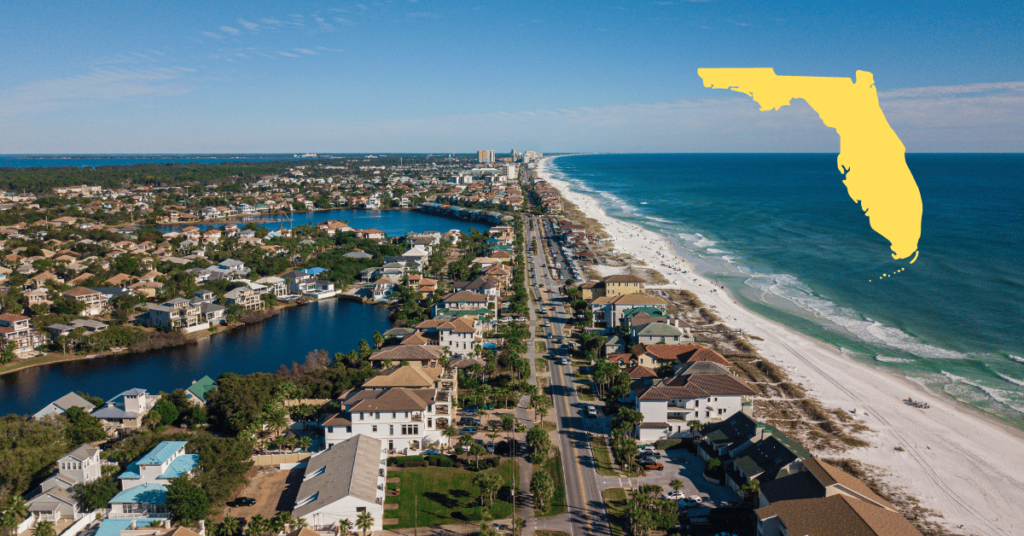California is known for its sunny beaches, diverse cities, and incredible scenery, but it also has a reputation for being one of the most expensive states in the U.S. For retirees, understanding the nuances of California’s taxes, cost of living, and how to manage finances in this state is essential.
This guide will help non-traditional retirees explore the tax implications and living costs of retiring in California, offering strategies to manage these challenges while still enjoying the state’s many benefits.
Cost of Living in California
California has a high cost of living, particularly in major metropolitan areas like San Francisco, Los Angeles, and San Diego. Factors such as housing, utilities, healthcare, and groceries are often higher than the national average.
1. Housing Costs
Housing is typically the biggest expense for retirees in California. Home prices and rental rates can vary dramatically depending on the region.
- San Francisco Bay Area: Home prices here are some of the highest in the nation. A single-family home in San Francisco can easily cost over $1 million.
- Los Angeles: Home prices in Los Angeles are also high, though not as extreme as San Francisco. Renting a one-bedroom apartment can cost upwards of $2,500 per month.
- Inland Areas: If you’re looking to cut costs, consider moving to less urban areas such as the Central Valley or the Inland Empire, where home prices and rents are significantly lower.
2. Utilities and Transportation
Utilities such as electricity, water, and gas can be costly, especially during California’s hot summers when air conditioning usage spikes. In addition, the state’s vast size often requires long-distance driving, making transportation costs (including fuel and car insurance) higher than the national average.
3. Healthcare Costs
Healthcare is another crucial consideration for retirees. California has excellent healthcare facilities, but the costs can be high, especially for those who require regular treatments or specialized care.
4. Groceries and Everyday Expenses
Grocery prices in California tend to be higher than in other states, though prices can vary based on location. Coastal cities and urban centers often have higher food costs compared to more rural areas.
Taxes in California

1. State Income Taxes
California has a progressive income tax system with some of the highest rates in the country, ranging from 1% to 13.3%. Retirees with significant income from pensions, retirement savings, or investments need to plan carefully due to these high rates.
- Social Security: The good news for retirees is that California does not tax Social Security benefits, which can be a relief for those relying heavily on this income.
- Pension and Retirement Account Income: Income from pensions, 401(k) plans, and IRAs is fully taxable in California. If you expect a high income in retirement, this could be a significant burden.
2. Property Taxes
California’s property tax rates are relatively moderate, thanks to Proposition 13, which limits the annual increase in assessed home values to 2%. However, because home prices are high, the actual dollar amount of property taxes paid can be substantial.
- Property Tax Benefits for Seniors: California offers some property tax relief for seniors, such as the ability to transfer your property tax base if you move within the state (under certain conditions).
3. Sales Taxes
California has some of the highest sales taxes in the country, with a base rate of 7.25%, and local jurisdictions can add additional taxes. This means that everyday purchases, from groceries to gasoline, will be more expensive due to taxes.
Retirement-Friendly Areas in California
While California may have high costs, there are still regions that are more affordable and offer a high quality of life for retirees.
1. Sacramento
The state’s capital is significantly more affordable than coastal cities, with lower home prices and living costs. Sacramento also offers a more laid-back atmosphere, while still providing access to great healthcare and entertainment.
2. Palm Springs
For retirees who prefer a warmer climate and a slower pace of life, Palm Springs can be an ideal option. Housing costs are relatively reasonable compared to major cities, and the area is known for its thriving retirement communities.
3. Central Coast (Santa Barbara, San Luis Obispo)
The Central Coast offers a mix of beautiful scenery and lower living costs than the Bay Area or Southern California’s big cities. This region provides a slower lifestyle, proximity to the beach, and an active community of retirees.
4. The Inland Empire
Located east of Los Angeles, the Inland Empire offers more affordable housing options and a growing number of retirement communities. While it lacks the ocean views of the coast, it’s still close to major cities and amenities.
Strategies for Retiring in California

1. Consider Downsizing
One effective way to manage the high cost of living in California is by downsizing. Selling a larger home and moving into a smaller, more manageable property can free up equity and reduce ongoing expenses like property taxes and maintenance.
2. Relocate to More Affordable Areas
Consider moving to less expensive areas within California. The state’s inland regions and smaller cities can offer a much lower cost of living while still providing access to many of California’s amenities.
3. Maximize Tax Efficiency
Take advantage of California’s tax policies that are favorable for retirees, such as no taxes on Social Security benefits. Additionally, work with a financial advisor to manage your pension or retirement account withdrawals in a way that minimizes your taxable income.
4. Budget for Higher Healthcare Costs
Make sure to account for potentially higher healthcare costs in California. Consider supplemental insurance plans to cover gaps in Medicare and make sure to set aside enough funds for long-term care, if necessary.
FAQs
Is California a tax-friendly state for retirees?
California offers some tax relief for retirees, such as not taxing Social Security benefits, but its high income tax rates and sales taxes can be burdensome. Retirees with significant retirement account income or pension payments may face high tax bills.
What are the most affordable places to retire in California?
Affordable retirement areas in California include Sacramento, Palm Springs, and parts of the Inland Empire. These regions offer lower housing costs compared to coastal cities like San Francisco and Los Angeles.
Can I retire comfortably in California with a modest budget?
It is possible to retire comfortably in California on a modest budget, but it will likely require some trade-offs, such as downsizing your home, moving to a less expensive region, and carefully managing expenses like healthcare and taxes.
How do California’s property taxes compare to other states?
California’s property tax rates are moderate due to Proposition 13, which caps annual increases in assessed home values. However, the high cost of housing means that retirees can still end up paying substantial property taxes compared to states with lower home prices.
Conclusion
Retiring in California offers many advantages, from its beautiful weather to its vibrant culture, but it also comes with high costs and complex tax considerations. By understanding these financial challenges and exploring strategies to manage expenses, retirees can make informed decisions about whether to call California home during their golden years. Whether you choose to downsize, move to a more affordable part of the state, or take advantage of senior tax benefits, California can still be a great place for non-traditional retirees seeking a dynamic retirement experience.
If you have any further questions feel free to comment down below or contact retiresmart for any help!




